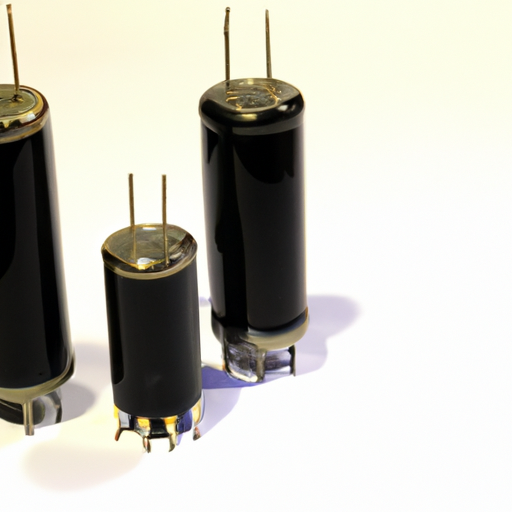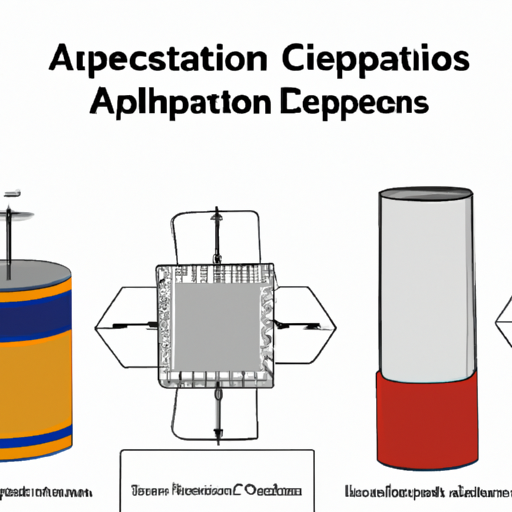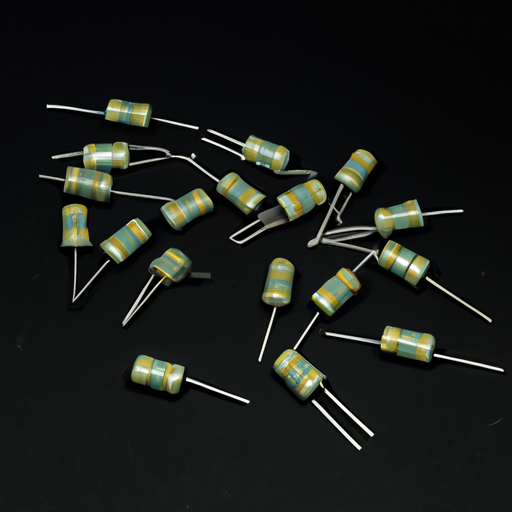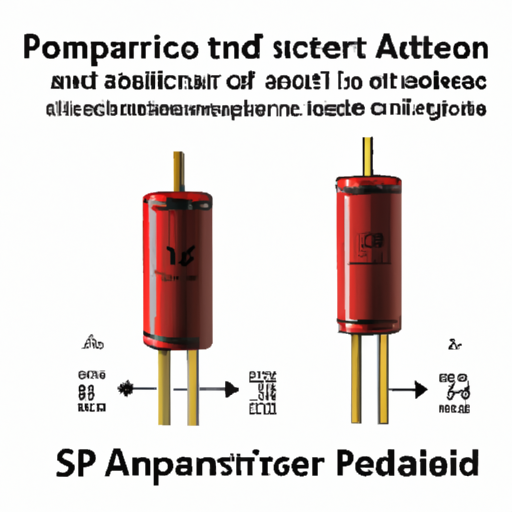What are the important product categories of capacitor banks?
Important Product Categories of Capacitor Banks
I. Introduction
Capacitor banks are essential components in electrical systems, designed to improve power quality and efficiency. They consist of multiple capacitors connected together to store and release electrical energy, thereby enhancing the performance of electrical networks. The importance of capacitor banks cannot be overstated, as they play a crucial role in power factor correction, voltage regulation, and energy efficiency. This article aims to explore the various product categories of capacitor banks, their configurations, components, applications, and considerations for selection.
II. Types of Capacitor Banks
A. Fixed Capacitor Banks
Fixed capacitor banks are the simplest type of capacitor banks, consisting of capacitors that are permanently connected to the electrical system. They are designed to provide a constant level of reactive power compensation.
**Applications and Benefits:**
Fixed capacitor banks are commonly used in industrial and commercial settings to improve power factor and reduce energy costs. They are particularly beneficial in applications with steady load conditions, as they provide a reliable source of reactive power. The main advantage of fixed capacitor banks is their low initial cost and minimal maintenance requirements.
B. Automatic Capacitor Banks
Automatic capacitor banks are equipped with control systems that automatically adjust the capacitor bank's output based on the load conditions. This dynamic response allows for optimal power factor correction.
**Applications and Benefits:**
These banks are ideal for facilities with fluctuating loads, such as manufacturing plants and commercial buildings. The primary benefit of automatic capacitor banks is their ability to maintain a consistent power factor, which can lead to significant energy savings and reduced utility penalties.
C. Switched Capacitor Banks
Switched capacitor banks consist of multiple capacitor units that can be switched on or off as needed. This allows for flexible reactive power compensation based on real-time demand.
**Applications and Benefits:**
Switched capacitor banks are often used in substations and large industrial facilities where load conditions vary significantly. They provide the advantage of precise control over reactive power, improving overall system efficiency and stability.
D. Harmonic Filter Capacitor Banks
Harmonic filter capacitor banks are designed to mitigate harmonic distortion in electrical systems. They combine capacitors with inductors to create a filter that can absorb specific harmonic frequencies.
**Applications and Benefits:**
These banks are particularly useful in industrial environments where non-linear loads, such as variable frequency drives and rectifiers, generate harmonics. By reducing harmonic distortion, these capacitor banks help protect sensitive equipment and improve overall power quality.
III. Capacitor Bank Configurations
A. Delta Configuration
In a delta configuration, the capacitors are connected in a triangular formation. This configuration is commonly used in three-phase systems.
**Advantages and Disadvantages:**
The delta configuration allows for higher voltage ratings and is less susceptible to voltage imbalances. However, it can be more complex to design and install compared to other configurations.
B. Wye Configuration
The wye configuration connects the capacitors in a star formation, with one terminal of each capacitor connected to a common point.
**Advantages and Disadvantages:**
Wye configurations are easier to manage and can provide a neutral point for grounding. However, they may have lower voltage ratings compared to delta configurations, which can limit their application in high-voltage systems.
IV. Capacitor Bank Components
A. Capacitors
Capacitors are the core components of capacitor banks. Various types of capacitors, such as film, ceramic, and electrolytic, are used based on the application requirements.
**Specifications and Ratings:**
Capacitors are rated based on their voltage, capacitance, and temperature tolerance. Selecting the right type and rating is crucial for ensuring reliability and performance.
B. Switchgear
Switchgear plays a vital role in capacitor banks, providing the necessary control and protection for the system.
**Types of Switchgear:**
Switchgear can include circuit breakers, contactors, and fuses, each serving a specific function in managing the flow of electricity and protecting against faults.
C. Control Systems
Control systems are essential for the operation of automatic and switched capacitor banks. They monitor load conditions and adjust the capacitor bank's output accordingly.
**Importance of Control Systems:**
Effective control systems enhance the performance of capacitor banks, ensuring optimal power factor correction and energy efficiency.
V. Applications of Capacitor Banks
A. Power Factor Correction
Power factor correction is one of the primary applications of capacitor banks. By providing reactive power, capacitor banks help improve the power factor of electrical systems.
**How Capacitor Banks Improve Power Factor:**
By compensating for lagging reactive power, capacitor banks reduce the overall demand on the electrical system, leading to lower energy costs and improved system efficiency.
B. Voltage Regulation
Capacitor banks also play a crucial role in voltage regulation. They help maintain voltage levels within acceptable limits, ensuring stable operation of electrical equipment.
**Benefits of Improved Voltage Stability:**
Stable voltage levels reduce the risk of equipment damage and improve the overall reliability of the electrical system.
C. Energy Efficiency
Capacitor banks contribute to energy efficiency by reducing energy losses in the electrical system.
**Long-term Cost Savings:**
By improving power factor and voltage stability, capacitor banks can lead to significant long-term cost savings for businesses and industries.
VI. Industry-Specific Applications
A. Industrial Applications
In industrial settings, capacitor banks are used to improve power quality and efficiency in manufacturing and processing plants.
**Benefits in Industrial Settings:**
They help reduce energy costs, improve equipment performance, and enhance overall operational efficiency.
B. Commercial Applications
In commercial buildings, capacitor banks are used to manage power quality and reduce energy expenses.
**Benefits in Commercial Settings:**
They provide a reliable source of reactive power, helping businesses avoid utility penalties and improve energy efficiency.
C. Renewable Energy Applications
Capacitor banks are increasingly being integrated into renewable energy systems, such as solar and wind energy projects.
**Benefits for Renewable Energy Projects:**
They help manage the variability of renewable energy sources, improving grid stability and reliability.
VII. Considerations for Selecting Capacitor Banks
A. Load Requirements
When selecting capacitor banks, it is essential to assess the load characteristics of the electrical system.
**Determining Capacity Needs:**
Understanding the reactive power requirements of the load is crucial for selecting the appropriate size and type of capacitor bank.
B. Environmental Factors
Environmental factors, such as temperature and humidity, can impact the performance and longevity of capacitor banks.
**Outdoor vs. Indoor Installations:**
Consideration should be given to the installation environment to ensure the selected capacitor bank can withstand the conditions it will face.
C. Regulatory Compliance
Understanding local regulations is vital when selecting capacitor banks.
**Importance of Compliance in Selection:**
Ensuring compliance with industry standards and regulations helps avoid potential legal issues and ensures the safe operation of the capacitor bank.
VIII. Conclusion
In summary, capacitor banks are vital components in electrical systems, providing numerous benefits such as power factor correction, voltage regulation, and energy efficiency. Understanding the different product categories, configurations, components, and applications of capacitor banks is essential for making informed decisions in their selection and implementation. As technology continues to evolve, the future of capacitor banks will likely see advancements that further enhance their performance and integration into modern electrical systems.
IX. References
For further reading and resources on capacitor banks, consider exploring industry standards and guidelines, as well as technical literature from manufacturers and electrical engineering organizations. These resources can provide valuable insights into the latest developments and best practices in capacitor bank technology.







